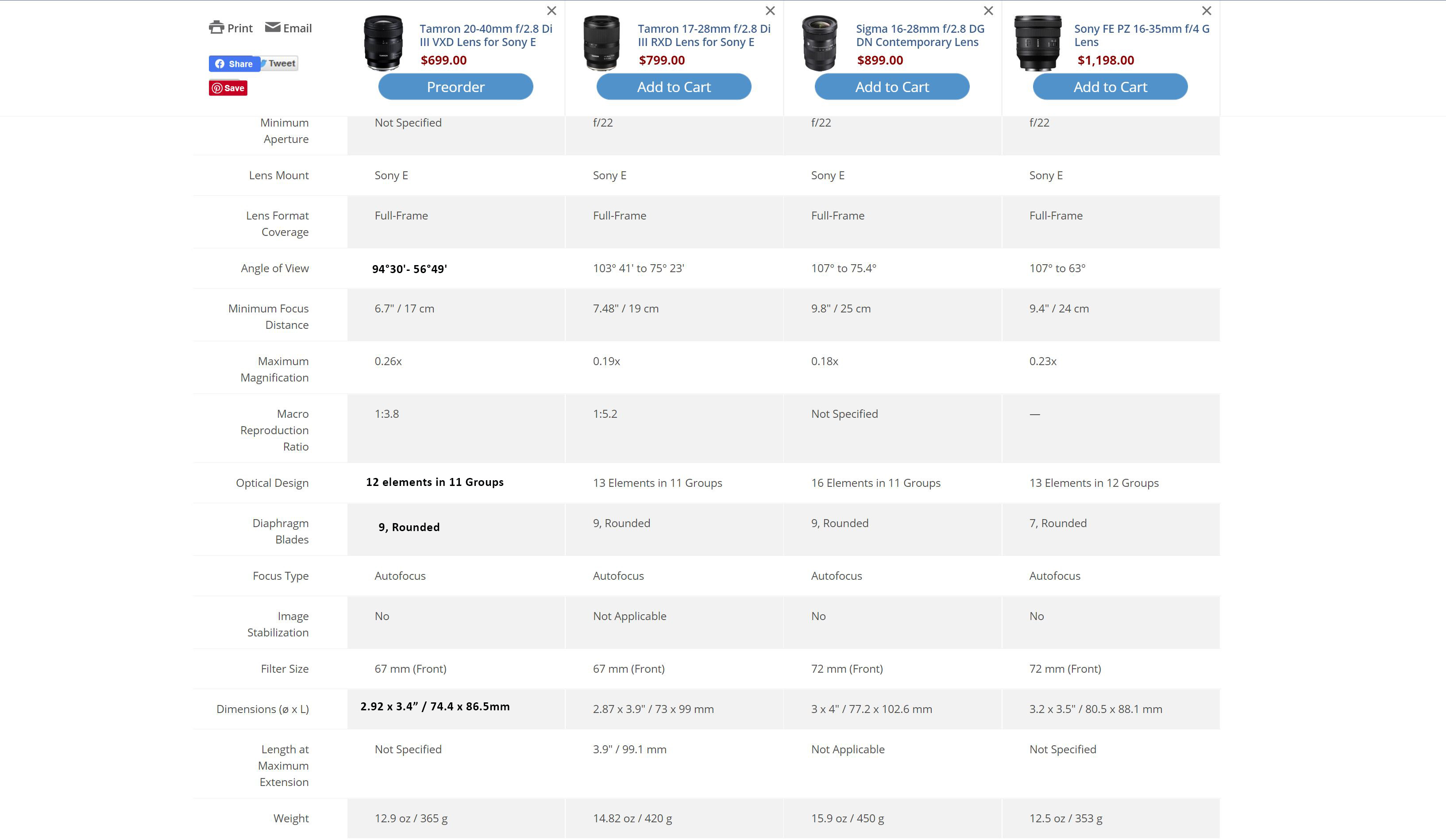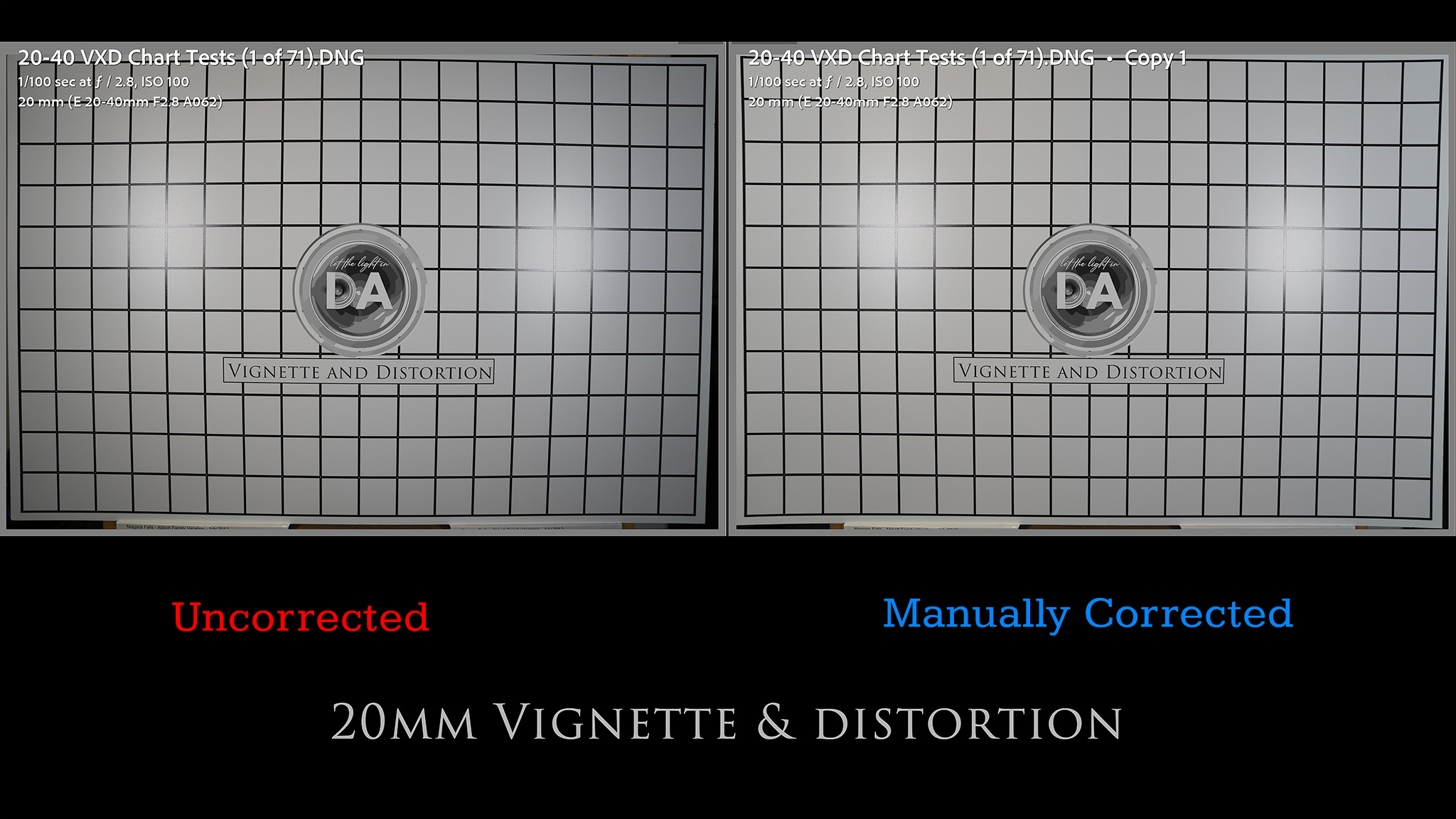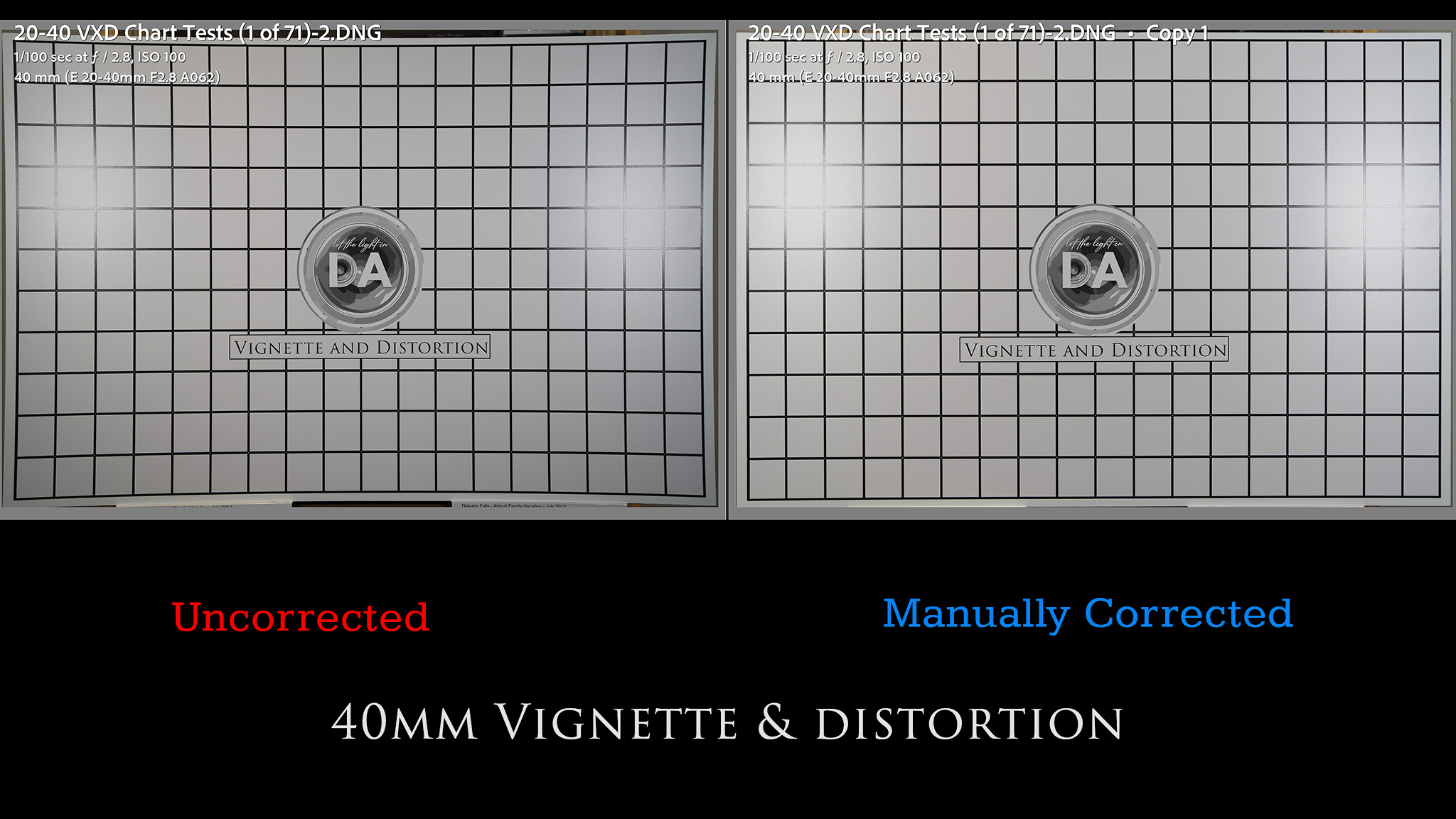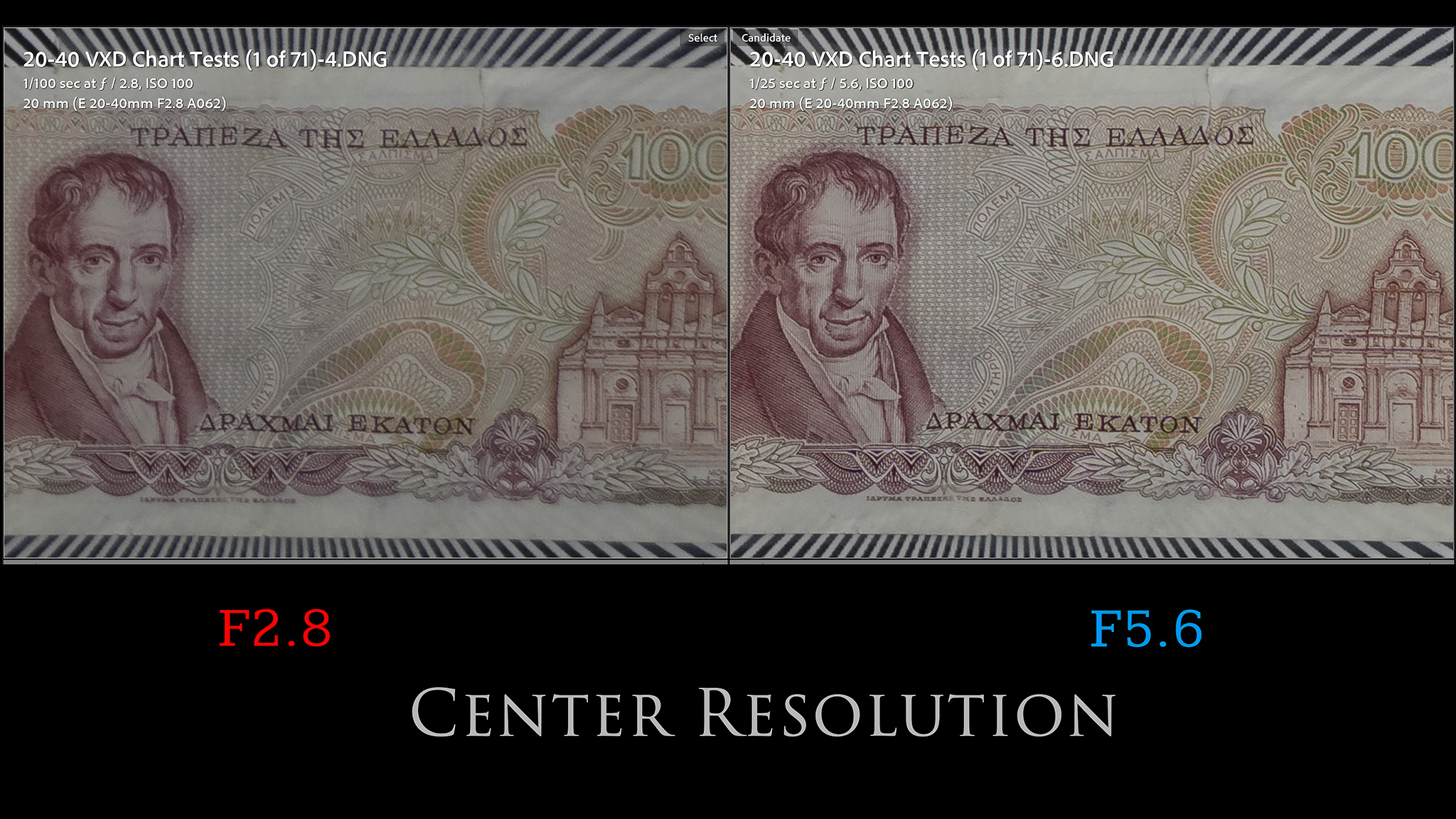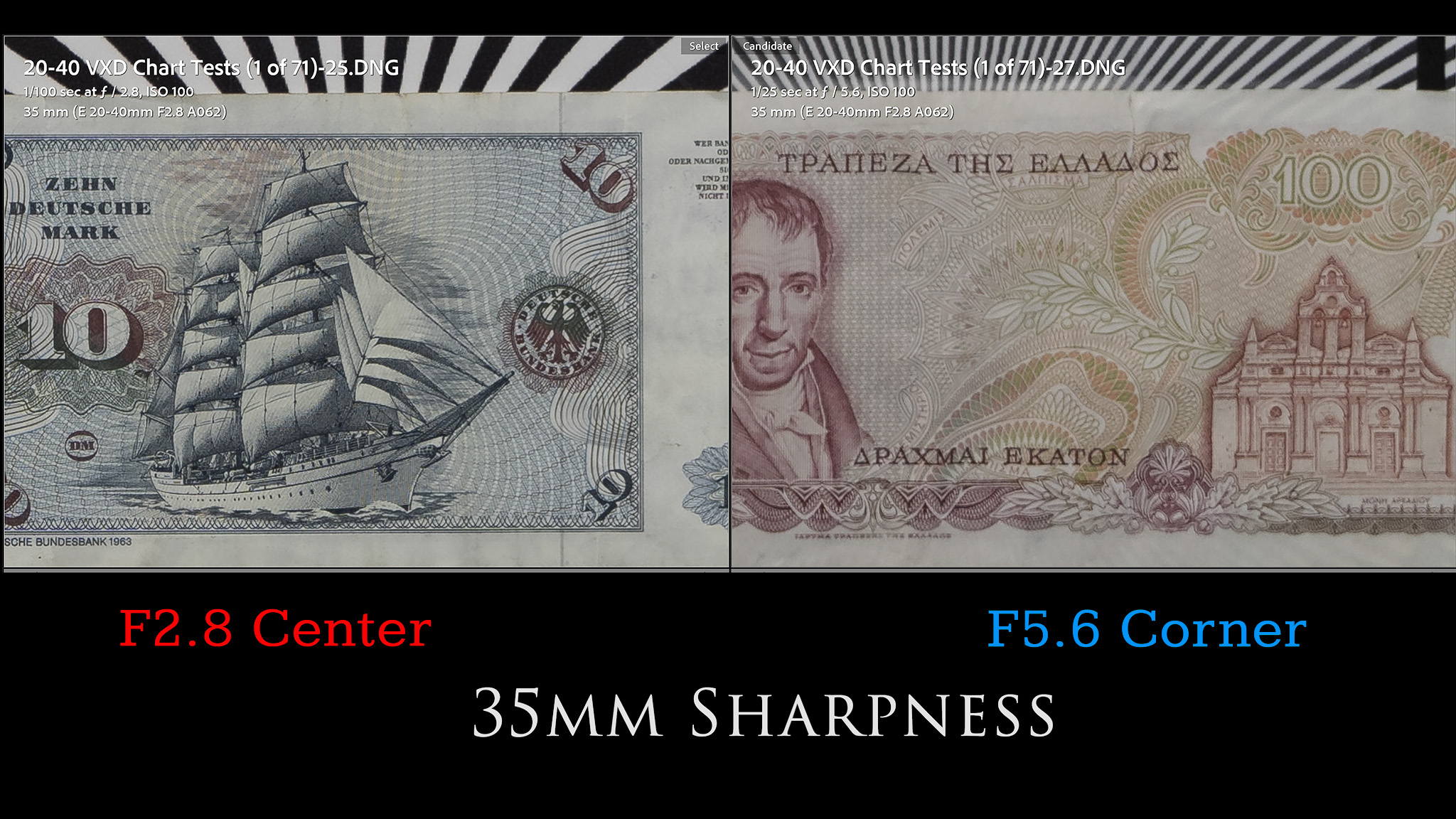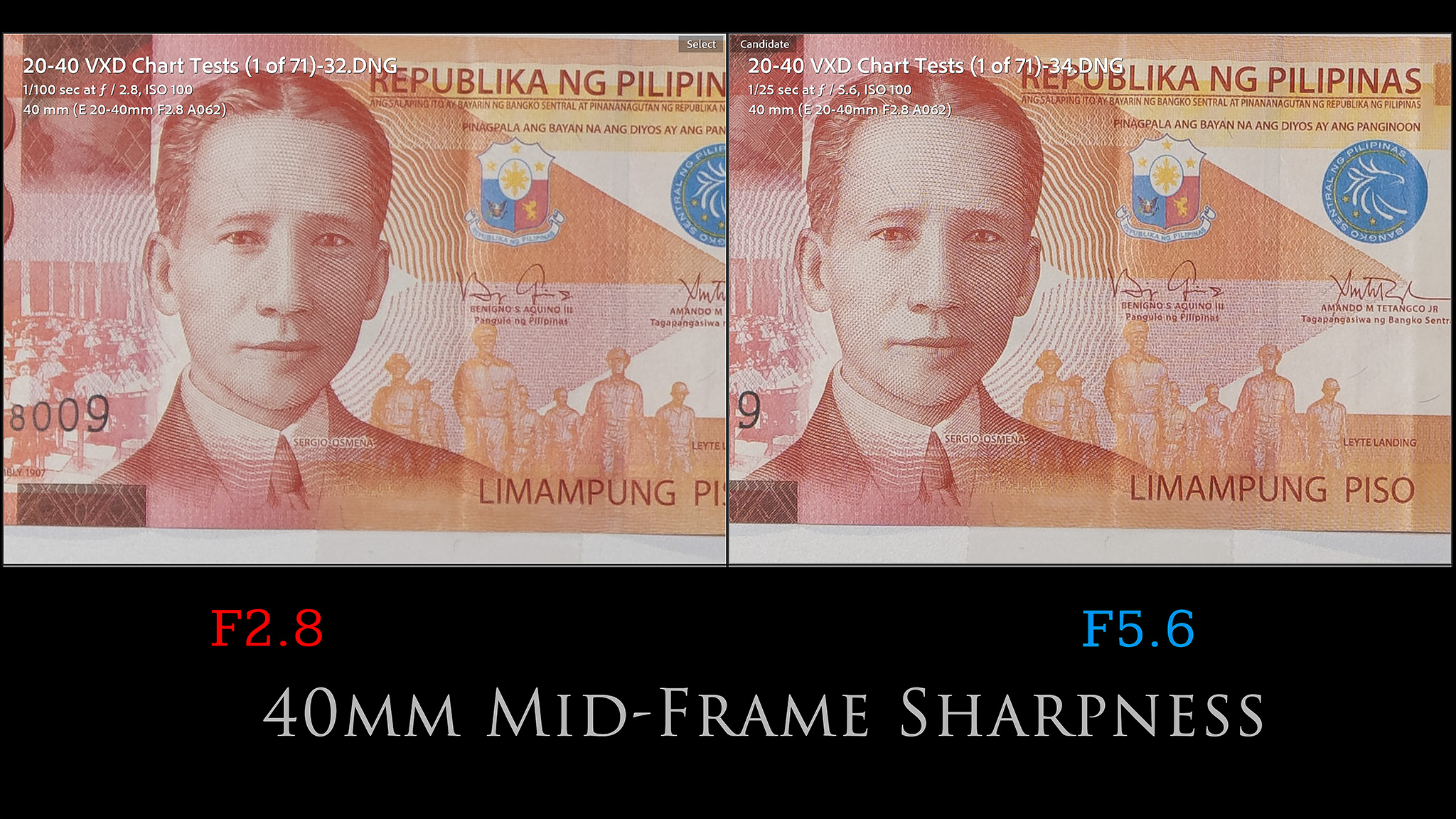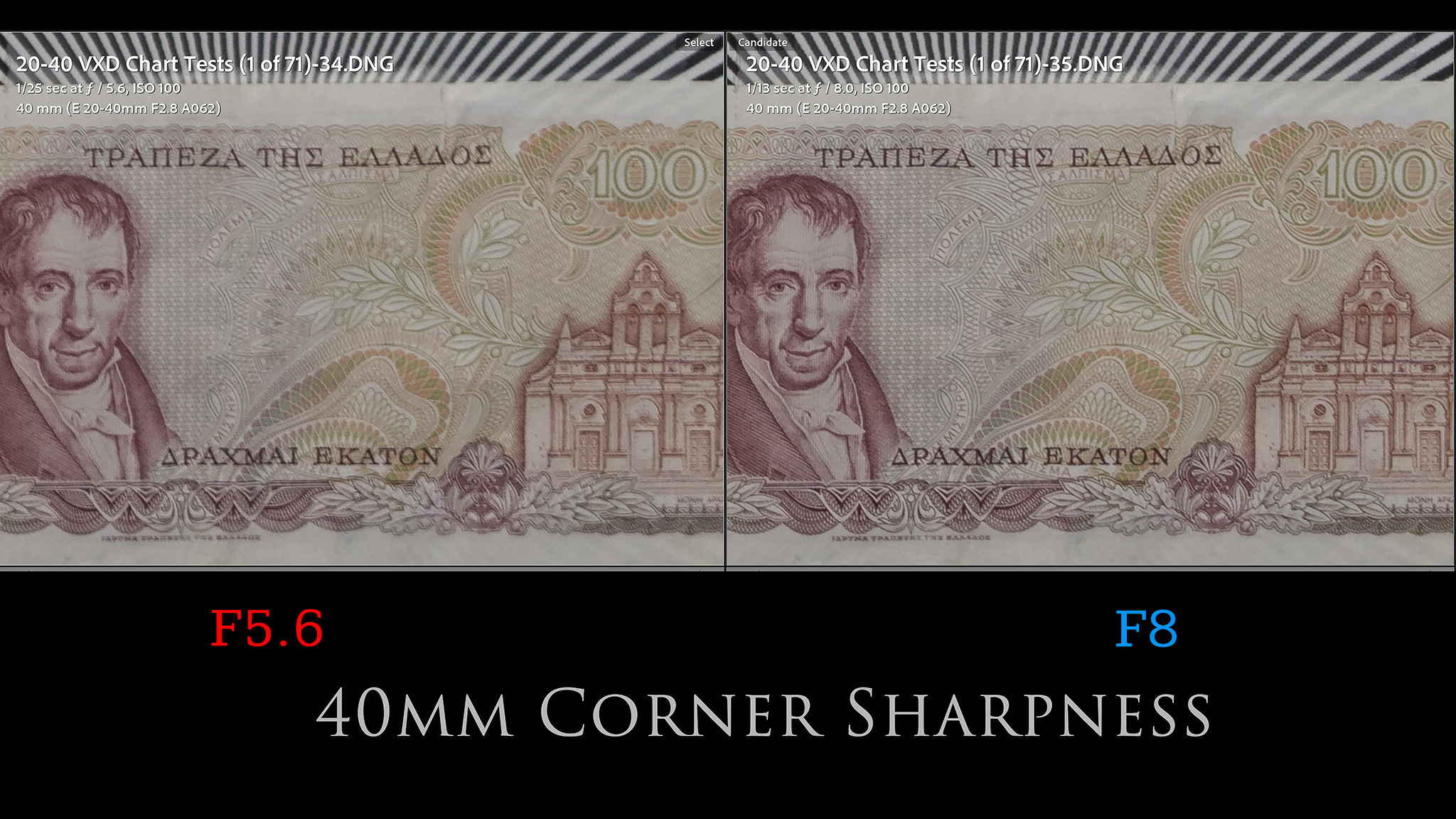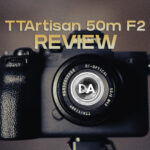Japanese lensmaker Tamron has had an epiphany: rather than just produce less expensive alternatives to first party lenses they could instead forge their own path and open up new market share for themselves by thinking outside the box. Tamron has made a lot of headlines (and sales) by tackling non-traditional focal ranges and aperture values in their zoom lenses. Some recent examples include the Tamron 35-150mm F2-2.8 VXD (one of my all-time favorite lenses – my review here) and the 50-400mm F4.5-6.3 VC VXD (my review here). These lenses blur the lines of traditional zoom ranges to give greater versality. The new Tamron 20-40mm F2.8 VXD (internally called A062, which we’ll also use for brevity during the review) isn’t quite as extreme, but it does cover from fairly wide angle (20mm) to the short standard range at 40mm. That allows you to go from this:
…to this:
Not extreme, perhaps, but certainly a non-traditional zoom range, particularly when it has a constant F2.8 aperture across the zoom range. Tamron’s first wide angle full frame zoom for Sony was the 17-28mm F2.8 RXD (my review here) was already more compact than competing lenses, but the new A062 is smaller still.
The new 20-40mm VXD isn’t as feature rich as some recent Tamron releases, but it comes with a pro-grade build that is noticeably upscale from the 17-28mm while also carrying a price tag that is $100 cheaper at just $699 USD. I will note that there is a pretty big variation in Tamron’s pricing from market to market based on local factors, so the differences between the new Tamron and existing competitors may be smaller or greater. Perhaps Tamron’s pricing in your country gives you something to cry about:
A note on the kitten. This is Nala, our new female Bengal kitten. My beloved Loki who has appeared in many of my reviews over the past year and a half was killed by some predator in the woods behind our home to our great sadness. Nala will be filling that void in our hearts.
Tamron has definitely proved that they can design and produce excellent zoom lenses, and it would seem that the A062 is no exception. But is it the lens for you? You can either watch my full review or read on to find out.
Follow Me @ YouTube | Patreon | Instagram | Facebook | DA Merchandise | Flickr | 500px
Thanks to Tamron USA for sending me a review loaner of this lens. *The tests and most of the photos that I share as a part of my review cycle have been done with the Sony a7IV along with the Sony Alpha 1 which will serve as my benchmark camera for the foreseeable future (my review here).
A062 Build, Handling, and Features
As noted, this is a very compact lens relative to the competition. I’ve grabbed a list of what I consider to the be natural competitors on Sony, including the 17-28mm. The Tamron 20-40mm manages to be the most compact and nearly the lightest of the group, with only the Sony F4 option being slightly lighter.
The A062 is only 74.4mm in diameter (leaving that common 67mm filter thread shared across most all of Tamron’s Sony options) and is just 86.5mm in length (2.92 x 3.4”). The weight is just 365g (12.9oz), meaning that this is going to be a fairly effortless lens to pack along on a hike or trip. It’s also small and compact enough to consider using on APS-C, where the focal length behaves like a 30-60mm zoom due to Sony’s 1.5x crop factor. That’s still an interesting and useful focal length. It is squatter and shorter than the 17-28mm from Tamron.
The A062 is not as feature rich as some recent Tamron releases, though it retains the more upscale feel of some of those lenses. The finish is a little glossier and (according to Tamron) has been upgraded to be more resistant to scratching and even fingerprints. The new finish makes the lens appear to be more like anodized metal, though I do think there’s still some engineered plastics in the construction. There’s a platinum-colored accept ring right near the lens mount. There is also some new sculpting to the lens design the gives it more shape. This does have some ergonomic value, as it makes the lens fit the hand a little better. It is worth noting that the lens does feel very good in the hands.
Tamron has really been nailing weather sealing, and that’s definitely the case here. There’s a rubber gasket at the lens mount that suggests at the weather sealing inside, and Tamron also shows a total of around 8 other internal seal points (by my count) along with a fluorine coating on the front element to give further protection. A fluorine coating not only helps protect the front element from scratches but also makes it water and fingerprint resistant and thus easier to clean. This is a professional grade lens ready for professional use, and it feels noticeably more upscale than the 17-28mm.
One of those sealed areas in an external USB-C port where you can do direct firmware updates along with tweaking some of the behavior of the lens. While there isn’t yet a firmware update available, being able to simply do your own firmware update via the software helps ensure that the lens remains future-proof. Essentially this is the functionality of the Tamron Tap-In Console but built right into the lens, meaning that you don’t have to buy something in addition. You can visit this page to download the software and/or get more information: The A062 is already compatible with and recognized by Tamron’s free Lens Utility software, and while there are fewer options due to not having a custom switch or focus hold button, I was able to attach it via the USB-C cable to my computer and tweak things like the behavior of the focus ring.
That focus ring is located near the front of the lens, and like all mirrorless lenses, it is focus-by-wire, meaning that focus input on the focus ring is routed through the focus motor to move the elements. The movement of the ring is smooth but a little light. I would prefer slightly more damping, but overall the quality of focus is fairly good. The addition of the USB-C port means that that you also have more control over the behavior of the focus ring. This includes being able to control the rotation of the ring and to choose whether the focus action is linear or non-linear (speed sensitive) in behavior.
The closer ring is the zoom ring, which is slightly wider than the focus ring and has a minor distinction in texture. The zoom ring’s friction is very well damped and smooth, and it is very easy to quickly zoom to your desired position. The A062 very slightly extends during zoom, but unlike many lenses the barrel extension occurs on the wide rather than telephoto end (the barrel extends the furthest at 20mm, so you’ll be likely to store that lens at the fully retracted 40mm position). The full extension is only about 9mm, so it shouldn’t really affect balance on something like a gimbal.
Tamron has included a nicely made lens hood that bayonets into place very cleanly and helps provide some shading along with some bump protection. The lens hood is a tulip type design and is relatively shallow. A look inside the hood shows more structure and reinforcement than many hoods, which should add up to more durability.
Tamron’s recent trends regarding MFD (minimum focus distance) hold true here, as the lens sports two different MFDs for wide (0.17m/6.7″) and telephoto (0.29m/11.4″). You can get slightly over 0.26x magnification on the wide end (1:3.8), which looks like this.
On the telephoto end the magnification is right under 0.20x (1:5.1), which is also extremely useful. Here’s what it looks like:
The wide end requires you to get very, very close to your subject, and you’ll be more likely to get some perspective distortion, but you can get some very crisp results up close. Removing the lens hood will help you get your shot without shading your subject.
You’ll get a little more contrast on the wide end along with higher magnification levels, but you can unlock creamier backgrounds on the long end and get a flatter plane of focus. Minimum focus distance will scale between these two extremes as you go throughout the zoom range.
Tamron has nine rounded blades in the aperture iris, and they claim that the aperture iris will stay circular for at least two stops down from maximum aperture, which seems accurate.
The Tamron 20-40mm F2.8 is not necessarily a feature rich lens, but this is a highly functional lens with a high quality build and excellent ergonomics. It’s easy to use and easy to bring along.
Autofocus and Tracking
The A062 is equipped with Tamron’s premium VXD focus system. VXD (Voice-coil eXtreme-torque Drive is a high speed linear focus motor system and on a lens like this provides autofocus performance that I would say is the equivalent of the best Sony wide angle lenses.
Autofocus was effortless in both my tests and real-world shooting. I got accurately focused results throughout my tests, with good eye tracking on whatever subject I used, whether human:
…or animal:
It worked well at further distances for environmental portraits, too.
It even worked well for “quirky” portraits (thanks to a nephew for being this amazing model!)
My “hand” test where I transition between holding up my hand and then letting AF snap back to my face was smooth and confident. The only time I saw any visible stepping was when I shot a very strongly backlit subject, but video AF was still able to make positive transitions.
I also tested the lens for vlogging, as the 20mm focal length is a good perspective for vlogging work. I walked through varying light conditions (sun coming through trees) and autofocus didn’t waver from my eyes.
Autofocus is fast, silent, and accurate. I have zero reservations about the performance I saw.
Tamron A062 Image Quality
The Tamron 20-40mm F2.8 sports an optical design featuring 12 elements in 11 groups. This includes some exotic elements. The MTF results show exceptional sharpness in the center and mid-frame, with a slight dip in the corners (though still at fairly high levels). 40mm shows a fairly similar performance curve though at lower levels. If this is the result at F2.8, then results at F5.6 or so should be very sharp.
And, sure enough, real world images are very sharp and detailed.
I had the interesting thought that this particular lens covers all three of Tamron’s wide angle prime lens releases on Sony – 20mm, 24mm, and 35mm, and probably does them with equal image sharpness and the same maximum aperture.
The A062 shows some barrel distortion at 20mm. It’s not excessive (unlike the 20mm F2.8), though the distortion is slightly complex (a mild mustache pattern). The correction profile does a cleaner job than I can with a manual correction of +7 here.
There’s also a moderate amount of vignette there, requiring a +53 (about two stops) correct.
At 40mm the distortion inverts to a pincushion type distortion, and this is more linear and easier to correct for. I used a -7 to correct the distortion and a +46 to correct the vignette.
Nothing particularly troubling there.
Longitudinal chromatic aberrations (LoCA) typically show up as purple/magenta fringing before the plane of focus and blue/green fringing beyond the plane of focus due to colors not being perfectly focused together. They typically diminish as the lens is stopped down to smaller apertures. I saw only minimal LoCA in my tests – not enough to be concerned about at all.
Lateral chromatic aberrations (LaCA) show up as fringing on either side of contrast areas (like tree trunks, for example) along the edges of the frame. Unlike LoCA, they do not improve when stopping the aperture down, but are much easier to correct for (typically a one click “remove chromatic aberrations” box in editing software). I saw extremely low levels of LaCA for a wide-angle lens, which will certainly help the performance in demanding situations.
So how about sharpness? We’ll do our formal test on the full frame (35mm) image circle that the lens is designed for, using the 50MP Sony Alpha 1 for this series of tests. Here’s a look at the test chart:
And here are the 20mm F2.8 crops at nearly 200% magnification, taken from the center, then mid-frame, and then extreme lower right corner:
The A062 certainly lives up to its billing at 20mm. It is exceptionally sharp across the frame, with very high contrast and detail…and it’s strong right into the corners.
When a lens is this sharp wide open, there is typically little further gain to be had. And that’s true across most of the frame, though the corners make a significant improvement when stopped down to landscape apertures.
24mm serves up similarly excellent center and mid-frame performance, but with softer corners. By 5.6 the results are simply excellent all across the frame.
The same is true at 28mm, where results are almost identical both wide open and stopped down. I compared to the 17-28mm (which I happen to own), and found that both were very similar in the center and with some give and take depending on where else you looked in the frame. This portion of the mid-frame favored the A062, but there was a place or two where I thought the 17-28mm looked slightly better.
Both lenses are exceptionally sharp at landscape apertures. I’ve compared the 17-28mm to many different wide angle lenses since its release, and I’ve really not seen another lens that was significantly better.
35mm was slightly softer, though not by a big margin, with things sharpening up nicely when stopped down basically everywhere except the extreme corners. Here you can see that the F2.8 center is as sharp as the F5.6 corner.
40mm results are very similar, with good sharpness everywhere save the extreme corner but nowhere at the level of the 20mm end (essentially what the MTF charts suggest).
Stopping down to F5.6 provides good sharpness across the frame (including the corners), with F8 being slightly better still.
It is easy to get highly detailed results across the frame when shooting at a typical landscape apertures of F5.6. Here’s a look at a 20mm and then 40mm shot of the same scene along with a center and left corner crop.
Bokeh quality is fairly good for a wide-angle lens. You can see from this up close shot of a fallen autumn leaf that while there is some outlining in the dew on the grass, the quality of the bokeh is good overall.
Likewise this shot of sumac leaves up close at 20mm shows a reasonably soft background.
Flare resistance is mostly dependent on your aperture value. Wide open there is very little ghosting and the lens proves resistant to flare. If you stop down to small apertures, like F11 in the final image of my sequence here, you will see a much more pronounced flare pattern in very bright conditions.
Autumn is a lovely season in Ontario, Canada, where I live, and the A062 proved a great companion for capturing fall colors. Tamron typically does a very good job with color, and the 20-40mm VXD delivered very nice color results.
Finally, I was able to test the coma performance for shooting the night sky. Star points are very nice and crisp with next to no coma smear even in the corners of the frame. This is one of the better astro lenses I’ve seen in a while.
Overall, this lens delivers a consistently strong optical performance (as expected). I found that it worked well in a variety of situations and gave me results that I could be proud of. Check out the image gallery here to see more photos from the lens.
Conclusion
The Tamron 20-40mm F2.8 Di III VXD is an unexpected and yet welcome wide angle zoom option for Sony FE shooters. It does compete with the wider Tamron 17-28mm F2.8 zoom, obviously, but it is also complimentary in that not everyone wants to go super wide. The A062 includes 20mm, which I find to be a sweet spot for landscape photography, but also goes long enough at 40mm to provide a “normal” angle of view, which potentially might allow someone to need to buy one less lens. Some photographers will be better served by the lens that goes wider, but others will benefit from the telephoto end of the A062.
This lens definitely represents a strong value, however, at a price point of $699 USD. It is nicely built, has good weather sealing, and is light and compact.
Add to this a strong autofocus and optical performance and you’ve got a lens that will serve a lot of photographers very well. The fact that is a strong astrophotography lens won’t hurt, either. All told, the A062 is a unique alternative to other wide angle zooms…and it is this type of lens at this type of price point that continues to give Sony the edge in the mirrorless marketplace.
Pros:
- Unique and useful zoom range
- Smaller and lighter than principle competition
- Good quality of construction including robust weather sealing
- VXD autofocus is quick, quiet, and accurate
- Fantastic coma performance
- Distortion and vignette is moderate
- CA well controlled
- Good sharpness across the zoom range
- Good magnification and close up performance
- Nice bokeh rendering
- USB-C port allows for customization and firmware updates
Cons:
- Some flaring at smaller apertures
- Slightly complex distortion pattern at 20mm
Purchase the Tamron 20-40mm F2.8 @ B&H Photo | Amazon | Camera Canada | Amplis Foto (Use Code AMPLIS52018DA for 5% off) | Amazon Canada | Amazon UK
Purchase the Sony a7IV @ B&H Photo | Amazon | Camera Canada | Amazon Canada | Amazon UK | Amazon Germany
Purchase the Sony Alpha 1 @ Camera Canada | B&H Photo | Amazon | Amazon Canada | Amazon UK | Amazon Germany | Ebay
Purchase a Sony a9M2 @ B&H Photo | Amazon | Camera Canada | Amazon Canada | Amazon UK | Amazon Germany | Ebay
Want to support this channel? Use these affiliate links to shop at: B&H Photo | Amazon | | Camera Canada | Ebay | Make a donation via Paypal
Buy DA Merchandise https://bit.ly/TWIMerch
Peak Design Leash Strap: Peak Design Store | B&H Photo | Amazon | Amazon Canada | Amazon UK
Adobe Photoshop Creative Cloud 1-Year Subscription
Get a discount off all Skylum Editing Software (Luminar, Aurora HDR, AirMagic) by using code DUSTINHDR at checkout:
Visit Dustin’s Amazon Storefront and see his favorite gear
Purchasing your gear through B&H and these links helps fund this website and keeps the articles coming. You can also make a donation here if you would like. Visit my Amazon page for some of my gear of choice! Thank you for your support.
Receive a 5% discount on all purchases at Amplis Foto, Canada’s Leading Photographic Supplier. Please enter discount code: AMPLIS52018DA in your cart. It is good for everything in your cart, and is stackable with other coupons, too! It will take 5% off your entire order! Proceeds go towards keeping this site going and providing you with new reviews!
Use Code “DUSTINHDR” to get $10 off ($15 CDN) any Skylum product: Luminar, Aurora, or AirMagic
Purchase the Tamron 20-40mm F2.8 @ B&H Photo https://bhpho.to/3S2oy9H | Amazon https://amzn.to/3etWPRq | Camera Canada https://shrsl.com/3qvbc | Amplis Foto https://bit.ly/A062Amplis (Use Code AMPLIS52018DA for 5% off) | Amazon Canada https://amzn.to/3CZmSJy | Amazon UK https://amzn.to/3Vro3Zw
Keywords: Tamron 20-40mm, A062, Tamron 20-40, 20-40 VXD, Tamron 20-40mm Review, 20-40, 20-40mm, Di III, VXD, Tamron 20-40mm F2.8 Di III VXD, F2.8, F/2.8, Full Frame, Review, Sony Alpha 1, Sony a7IV, Review, Hands On, Dustin Abbott, Real World, Comparison, Sharpness, Bokeh, Flare Resistance, Autofocus, Image Quality, Sample Images, Video, Photography, Sony a9, Sony a7IV, Sony Alpha 1, Sony A1, let the light in, #letthelightin, DA

